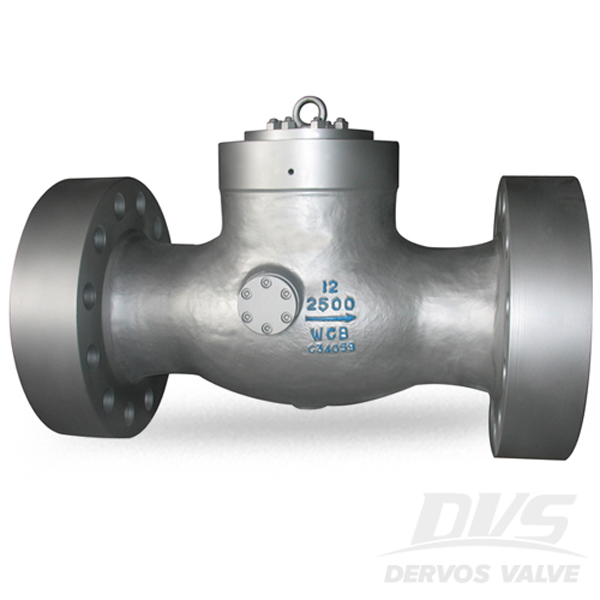Payment:
30% T/T When Order, 70% T/T Before ShipmentProduct Origin:
ChinaColor:
CustomizationShipping Port:
Shanghai ChinaLead Time:
30~55 days Ex Works After Order ConfirmationMaterial:
Cast Steel Check Valve, Carbon Steel Check ValveThe 12 inch high pressure check valve is designed with pressure seal bonnet, RTJ flange, tilting disc, made of carbon steel WCB body and hard face sealing.
Quick Detail
|
Type |
Check Valve |
|
Size |
12'' |
|
DesignPressure |
2500LB |
|
Construction |
Pressure Seal Bonnet, Tilting Disc Type |
|
Connection |
RTJ Flange |
|
Design & Manufacture |
ASME B16.34 |
|
End to End |
ASME B16.10 |
|
Connection |
ASME B16.5 |
|
Pressure & Temp |
ASME B16.34 |
|
Test & Inspection |
API 598 |
|
Body Material |
A216 WCB |
|
Trim Material |
13CR+STL |
|
Temp Range |
-29℃~+350℃ |
|
Media |
W.O.G. |
Product Range
Body Material Range: WCB, WCC, WC1,CF8M, CF8, CF3, CF3M, LCB, LCC
Size Range: 2”~60” (DN50~DN1500)
End Connection Type: Flange End, Weld End
Design Pressure Range: 150lbs~600lbs
Temp Range: -46℃~ +425℃

Related Knowledge
What is a tilting disc check valve?
The disc of a tilting disc check valve has a pivot point at the center of it. It is desinged to overcome weaknesses of general type swing check valve.
Compared to swing type check valve, the tilting check valve could remain fully open and steady at lower flow rates. That is to say, the swing check valve needs a high velocity of fluid to keep disc open and a higher cracking pressure.
For low pressure situation, the pressure drop of a tilting disc check valve is much lower than the swing type. But at a higher flow rate, the tilting check valve has higher pressure drop than swing type.
If you are interested in our products and want to know more details,please leave a message here,we will reply you as soon as we can.